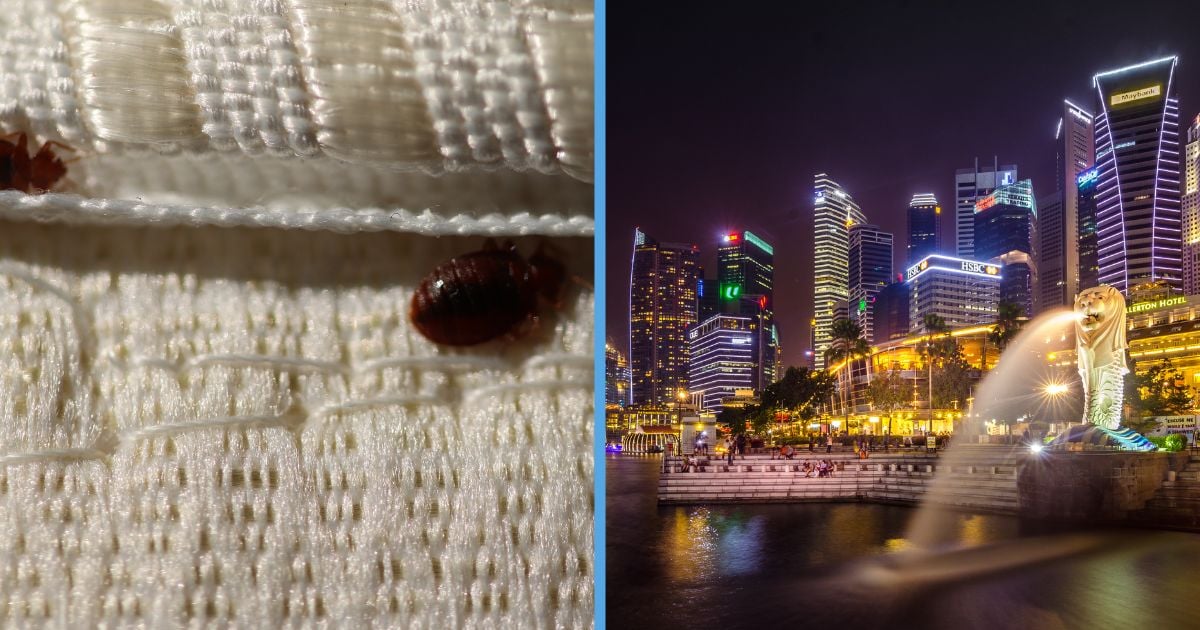If you notice an itchy bump on your skin, your first instinct might be to blame a mosquito, but it could very well be a bedbug.
Bedbug infestations are currently on the rise, particularly with South Korea declaring war on bedbugs in response to a surge in reported cases.
There has been a notable increase in bedbug infestations in South Korea, with bathhouses, university dormitories, and train stations nationwide on high alert.
The number of suspected bedbug cases in South Korea has surpassed 30, with over half reported in Seoul.
If you assume that Singapore won’t fall prey to this infestation, recent news has shown that Singapore is not exempt from it either.
Bedbug Cases in Singapore Increased By 40% In the Last Two Months
According to Channel News Asia (CNA), there has been a significant increase in reported bedbug cases at Aardwolf Pestkare, a pest control company, with an approximate 40% increase in the last two months.
Pierce Chan, the firm’s sales manager, pointed out that the surge in bedbug infestations is not limited to a specific region but is a global issue, with cities like Paris and countries like South Korea grappling with the same problem.
However, Chan emphasised that tourists especially should exercise caution.
Speaking to CNA, he stressed the importance of personal hygiene and the need to be vigilant, particularly when staying in hotel rooms and when bringing back items from overseas.
If you’d like to understand why travellers may be involved in the bedbug infestation in Singapore, watch this video to learn more.
Meanwhile, another pest control company, Pestbusters, has witnessed a 10% to 15% rise in inquiries and cases over the past six months.
The surge in reported bedbug cases can be attributed to travel, which is expected to escalate with the holiday season just around the corner in the upcoming months.
Likewise, Mr Chan anticipates a further 20% to 30% surge in infestations during the first three months of 2024 as people return from their overseas trips during the December school holidays.
He said that one effective way to prevent bringing these bedbugs home is soaking clothes and other items in water hotter than 60 degrees Celsius.
How to Prevent Bedbug Infestations
If you suspect your home has a bedbug infestation, it is crucial to take the necessary measures to control the infestation.
That means reaching out to pest control companies like Aardwolf and Pestbusters, where they will offer practical solutions like chemical and heat treatments to combat bedbug infestations.
Their thorough inspection includes scrutinising areas such as cracks in parquet flooring, headboards, cable trunking, power points, cupboards, sofas, and drawers, all of which are common hiding spots for bedbugs.
In the case of chemical treatment, specific chemicals are expertly applied to areas with infestations and potential hiding places. The residual effect of the spray will ensure that any remaining eggs that come into contact with it will also perish.
On the other hand, heat treatment is particularly suitable for homes with toddlers or seniors.
The treatment typically spans half a day, with subsequent follow-up visits to ensure that the issue is effectively addressed and resolved.
Contrary to their name, bedbugs are not confined to beds alone.
They can be found in various places, including your drawers, on tables, and even under the chair you’re sitting on at this moment.
The name “bedbugs” originates from their tendency to hide beneath mattresses and bed frames. Still, these creatures have a knack for remaining hidden until you are asleep.
Typically, the lifespan of most bedbugs ranges from four to six months, with some capable of surviving up to 12 months.
In fact, they can remain hidden for a year or even longer and endure for two to six months without any meal.



